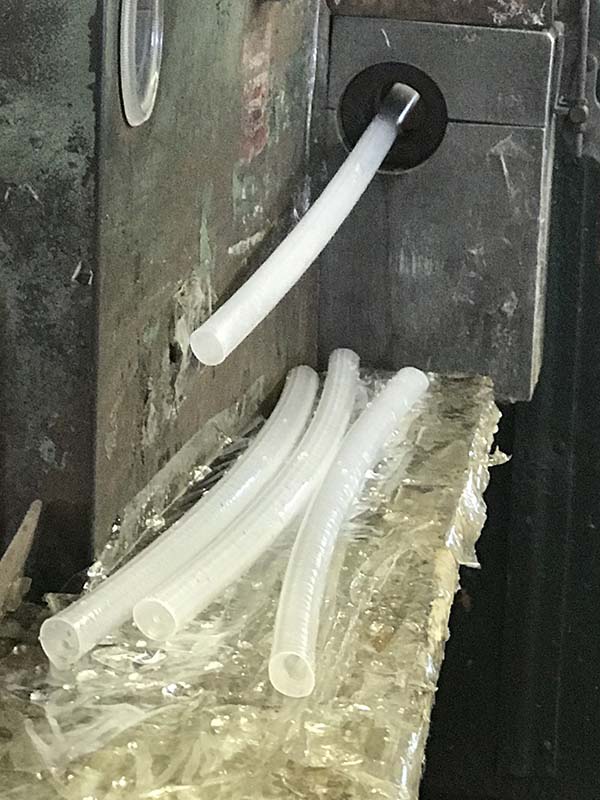Even in the best of economic times, businesses have to maximize efficiencies and cut waste. This takes on an even greater importance during an economic slowdown. While not often considered paramount to the overall success of a company, it can often be the peripheral areas that allows a business to boost production, thereby growing profits.
Cooling towers may not be the first place companies look to for adding efficiency, but they are a critical component for a number of industries that require process cooling. So dealing with a cooling tower that hinders production — either in adding downtime or slowing down production runs — is often an area where companies can see an almost immediate ROI.
Atlantis Plastics Company is a plastic extrusion manufacturer owned by Larry Walters and based in Houston. For years, it struggled with a cooling tower that not only required repeated maintenance, but also was not effectively cooling the water that is critical to their process. This meant that the company could not run at maximum capacity for very long, especially during hot Texas summers.

PIPING PLANT: LDPE tubing is extruded out of a machine at Atlantis Plastics Company.

TIME FOR REPLACEMENT: Stephan Wagner knew a new cooling tower was needed in order to maintain efficiency in the manufacturing plant.
“We extrude LDPE tubing out of the machine, and in a matter of about a foot, it has to cool enough so that it maintains size and shape,” explained Stephan Wagner, operations manager at Atlantis Plastics Company.

TOWER AND TANK: To help set the plastic, the extruded tubing travels immediately through a tank of water that cools the low-density polyethylene.
To help set the plastic, the extruded tubing travels immediately through a tank of water that cools the low-density polyethylene. The water from the tank then circulates back through the cooling tower in a closed loop.
“If we can’t maintain the right temperature of the water in the tanks, then the tubing will come out the wrong shape, the wrong size, or not achieve vacuum in some instances,” he said. “So the cooling tower is very important in our production.”
According to Wagner, the product coming out on the extruder is at about 350°F. It has to hit the water and cool to about 85-90°F. Water inside the cooling tanks that rises too far above those specified temperatures will create problems and slow things down.
“If we can’t maintain that water temperature in the cooling tank, then we are making less product per hour,” said Wagner. “That is really what I mean by lacking efficiency.”
Wagner and owner Larry Walters recognized they would have to make changes or risk squelching more profits.
“We knew we could no longer ignore the little things, or we wouldn’t be able to concentrate on the bigger areas of the business,” said Wagner. “So we started looking for ways to make improvements without breaking the bank.”

HDPE TOWER: Atlantis Plastics selected the Paragon cooling tower, made of engineered plastic, from Delta Cooling.
With a long history of manufacturing plastics, Wagner says it was an easy decision to see the potential in a cooling tower that was made out of engineered plastic, or HDPE (high density polyethylene). Atlantis Plastics selected the Paragon cooling tower from Delta Cooling.
“I am well aware that HDPE is impervious to corrosion and to the elements, especially here in Houston where our units are outside,” Wagner said. “It does not matter whether it gets rained on. It does not matter if the sun hits it. It does not matter what water treatment additives you use; it is not going to give you any problems.”
Before the first Delta unit was installed a few years ago, Atlantis Plastics was going through a minimum of two pumps per year. Wagner said the cost for each pump was at least $500.
“With the Delta unit, I have not had to replace a single pump since I bought the first one,” he reported.

ENERGY SAVER: Wagner now has two HDPE towers at his plant, and some users are reporting electric power energy savings as high as 40%.
Wagner now has two HDPE towers at his plant, and some users are reporting electric power energy savings as high as 40%. He attributes the savings to the higher efficiency designs, along with the VFD (variable-frequency drive) rated motors on the new cooling towers.
“Like any other business, we are always looking for ways that we can improve, whether that be electricity, efficiency, or just about anything else,” he said. “We know we will be more productive with less downtime and will have greater returns sooner, and that just makes good business sense.”







